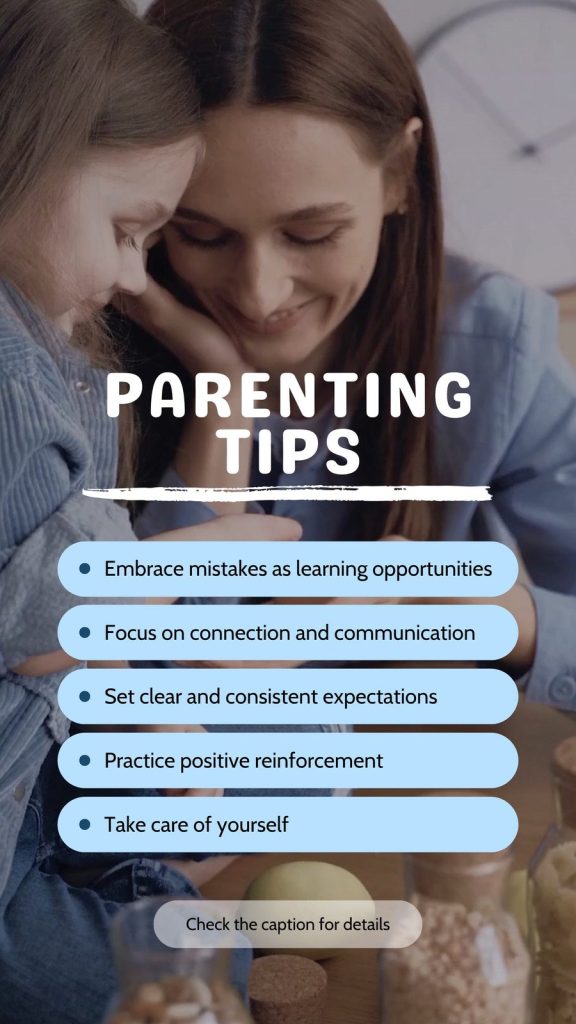Minimalism in Education: Strategies for Students to Focus and Learn Clearly

Understanding Minimalism in Education
In today’s fast-paced and distraction-laden environment, students are often inundated with a plethora of information, tasks, and sensory inputs. The minimalist approach in education offers a breath of fresh air by advocating for a more intentional and thoughtful learning experience. By stripping away the non-essential, students can uncover a path to clarity, ultimately leading to greater academic success.
Clutter-free spaces play a pivotal role in this philosophy. Research suggests that physical clutter can lead to cognitive overload, making it difficult for students to concentrate and process information effectively. For instance, a classroom that is sparsely decorated with a few well-placed motivational quotes and organized supplies can help students focus on their work rather than being sidetracked by unnecessary visual stimuli. Similarly, at home, a designated study area that is free from distractions—such as cluttered desks or excessive decorations—can create an optimal environment for learning. Students might consider employing strategies such as the “five-minute rule,” where they spend just five minutes tidying their study space before beginning their work.
- Prioritized tasks: The art of minimalism encourages students to identify and tackle essential tasks first. For example, creating a daily to-do list that highlights the most important assignments can help prevent feelings of overwhelm. Instead of struggling to manage multiple projects at once, students can concentrate on completing one task before moving on to the next. This method not only reduces stress but also improves the quality of work produced.
- Curated resources: In the age of information overload, less can indeed be more. Students can benefit from selecting a limited number of high-quality educational resources, such as a handful of reputable textbooks or specific online courses. By focusing on fewer materials, learners are likely to develop a deeper understanding of the core concepts as opposed to only scratching the surface with a vast array of sources.
Implementing these practices allows for a learning experience centered on understanding and engaging with the content rather than just rote memorization or superficial learning. For instance, a student who chooses to read a couple of highly-rated books on a subject and actively participates in discussions will likely grasp the material more thoroughly than one who passively reads from multiple less-effective sources.
As more students across the United States search for methods to enhance their education, embracing minimalism emerges as a compelling strategy. It encourages a shift in mindset, promoting a deeper connection with the material and a more enjoyable learning process. The forthcoming sections will delve into practical techniques for implementing minimalism in education, opening doors to a transformative journey in both academic and personal growth.
DISCOVER MORE: Click here to learn how decluttering can benefit your mental health

Effective Strategies for Embracing Minimalism in Learning
As students navigate the complexities of modern education, the principles of minimalism can serve as a valuable compass to simplify and enhance their learning experiences. By adopting a tailored approach to their studies, students can effectively manage their workload, deepen their understanding, and cultivate a more rewarding academic journey. Let’s explore specific strategies that embody the minimalist approach, focusing on clarity and concentration.
- Defining Clear Objectives: Successful learning begins with a clear understanding of goals. Students should define specific and achievable objectives for each study session, which can guide their focus and help them stay on track. For example, instead of vaguely aiming to “study biology,” students might set a target to “understand the processes of cellular respiration.” This clarity not only enhances motivation but also allows for a directed effort, making the overall study session more productive.
- Emphasizing Quality Over Quantity: In the realm of education, less can often equate to more. Students are encouraged to select a few, well-chosen sources of information, rather than attempting to assimilate vast amounts of data from every available option. By honing in on reputable textbooks, scholarly articles, or curated online courses, learners can immerse themselves in high-quality content. This method promotes a deeper comprehension of material while averting the confusion that can arise from sifting through excessive information.
- Time Management Techniques: The minimalist approach extends beyond physical spaces and resources; it also encompasses time management practices. Techniques such as the Pomodoro Technique—where students study for 25 minutes followed by a 5-minute break—help break study sessions into manageable intervals. This method not only sustains concentration but also allows time for reflection and recovery, increasing overall efficiency and retention.
- Digital Decluttering: In an age dominated by technology, digital clutter can be just as overwhelming as physical disarray. Students should take the time to organize their digital tools, such as folders on their computers and subscriptions to online learning platforms. Streamlining digital resources can streamline the learning process, enabling students to focus on what truly matters without the distraction of an overloaded desktop or endless tabs.
Implementing these strategies nurtures an educational environment that prioritizes thoughtfulness and purposefulness. For instance, a student who sets clear objectives and curates their study materials is more likely to engage in meaningful learning rather than merely absorbing information. As students experiment with these minimalist techniques, they often discover newfound clarity that enhances their ability to learn and retain information.
As we move forward, this article will delve even deeper into the transformative impact of minimalism in education. Understanding how to embrace these strategies can not only relieve the pressure of academic demands but also pave the way for a more satisfying and enriching educational experience.
| Advantages | Description |
|---|---|
| Enhanced Focus | Minimalism encourages reducing distractions, allowing students to maintain attention on essential tasks. |
| Clarity in Learning | By simplifying the learning environment, concepts become clearer and easier to grasp. |
| Improved Retention | Fewer materials mean students can better retain information as their cognitive load is reduced. |
| Stress Reduction | A minimalist approach can alleviate overwhelming feelings, resulting in a more conducive learning atmosphere. |
Implementing minimalism in education not only develops a stronger academic framework but also promotes mental well-being among students. By adopting these strategies, educators can create a learning space that prioritizes what truly matters.
DIVE DEEPER: Click here for tips on mastering digital simplicity
Simplifying Your Study Environment
A crucial element of minimalism in education revolves around the study environment itself. A cluttered or disorganized space can significantly undermine a student’s ability to focus and absorb information. By creating a simplified study area, students can foster an atmosphere conducive to concentration and learning.
- Designating a Specific Study Space: Students should consider establishing a dedicated study area within their homes—an inviting space that is free from distractions. This location should ideally be well-lit, quiet, and equipped with only essential supplies. When a student repeatedly utilizes the same area for studying, their brain begins to associate that space with focus and productivity, leading to increased effectiveness.
- Utilizing Minimalist Design Principles: The concept of minimalism doesn’t only apply to possessions but can also extend to the design of physical spaces. A study space adorned with minimal décor, such as a few inspiring quotes or artwork that draws attention to one’s goals, can influence motivation positively. Overly stimulating environments, on the other hand, can hinder focus, making it essential to create an aesthetic that promotes serenity and clarity.
- Implementing the “One In, One Out” Rule: To prevent clutter from taking over their study area, students should adopt the “one in, one out” practice. This means that for every new item or resource brought into their educational space, an old or unused item must be removed. This rule helps maintain a streamlined environment and encourages students to evaluate the necessity of what they own, keeping only items that serve a practical purpose in their academic life.
- Fostering a Distraction-Free Zone: In an era dominated by technology, it’s vital for students to be intentional about their online presence and distractions. To create a distraction-free zone, students might utilize apps that block social media and non-essential notifications during study sessions. Such measures reinforce the importance of focused time, allowing them to engage with their materials without the temptation of constant interruptions.
The effort put into simplifying a study environment can be transformative. For many students, eliminating distractions and streamlining their surroundings can significantly boost their ability to engage deeply with the material. The serene atmosphere promotes a happier and less stressful learning experience.
Streamlining Coursework and Assignments
Another principle of minimalism that students can apply is the thoughtful selection and execution of coursework and assignments. With an overwhelming number of projects and assessments, it can be easy for students to feel scattered. By adopting streamlined approaches to their academic responsibilities, students can focus better and enhance their learning.
- Prioritizing Assignments: Students should regularly evaluate their assignments and prioritize them based on deadlines and academic significance. Instead of treating all tasks equally, they can label assignments as urgent, important, or less critical. This practice encourages students to allocate their time and energy more effectively, ensuring that they focus their efforts on tasks that yield the most academic value and personal satisfaction.
- Embracing Collaborative Learning: One minimalist strategy involves leveraging collaborative or group work. Studying with peers can alleviate the burden of tackling complex topics alone, allowing for a division of labor that fosters deeper comprehension. Students can engage in meaningful discussions, share resources, and support each other’s understanding of difficult concepts, transforming the learning journey into a collective experience.
- Opting for Active Learning: Rather than passively consuming information, students should look for active learning opportunities, such as teaching the material to others or applying concepts in real-life scenarios. This hands-on approach deepens understanding and retention, as students are often more invested in material they can connect to their lives.
Implementing these strategies not only aligns with the minimalist philosophy but also enhances the overall learning experience. Through intentional simplification, students can alleviate stress while enhancing their engagement with the material—ultimately cultivating a more productive academic environment that embraces clarity and focus.
DISCOVER MORE: Click here to learn how to cultivate a minimalist space
Conclusion
In an age where distractions seem to multiply at an alarming rate, embracing minimalism in education offers students a vital lifeline to reclaim focus and clarity in their learning environments. The strategies discussed—from simplifying study spaces and prioritizing assignments to nurturing collaborative learning—underscore the profound impact of a minimalist approach on academic efficiency. By consciously selecting their environments and engagements, students can transform overwhelming challenges into manageable tasks, paving the way for deeper understanding and retention of information.
Moreover, the essence of minimalism extends beyond the physical realm; it serves as a mindset encouraging intentionality in every aspect of education. Students are prompted to engage meaningfully with their material and to cultivate spaces that resonate with motivation and serenity. Reframing academic responsibilities through a minimalist lens can lead to enhanced emotional well-being, reduced anxiety, and ultimately, a more fulfilling educational experience.
Therefore, as students navigate their academic journeys, adopting minimalist strategies can empower them to focus deeply, reduce stress, and enhance their overall learning outcomes. As we advance through this rapidly evolving educational landscape, the principles of minimalism may be not just beneficial, but essential in fostering a culture of effective learning. Embracing these practices today can yield results that resonate long into the future, making minimalism an invaluable ally in the pursuit of academic excellence.


